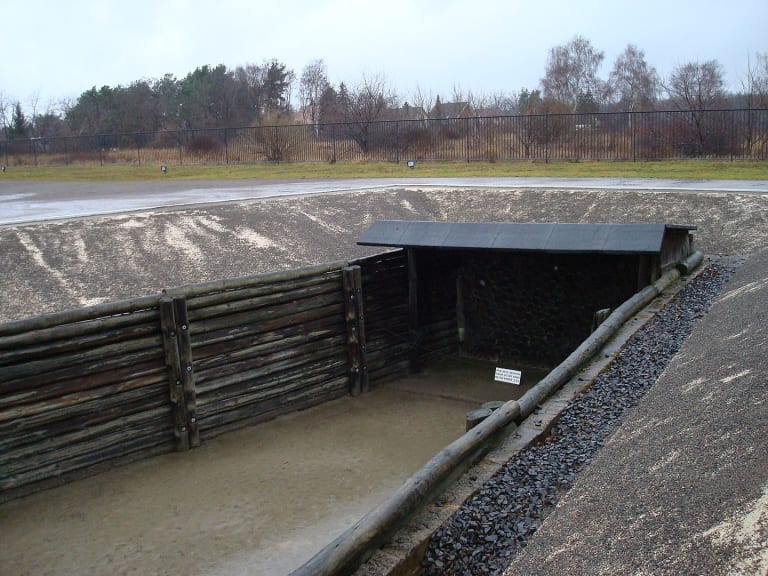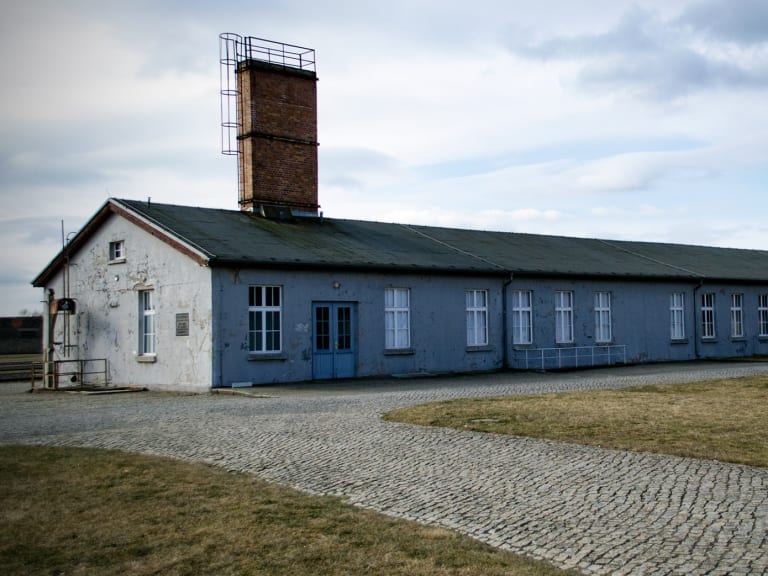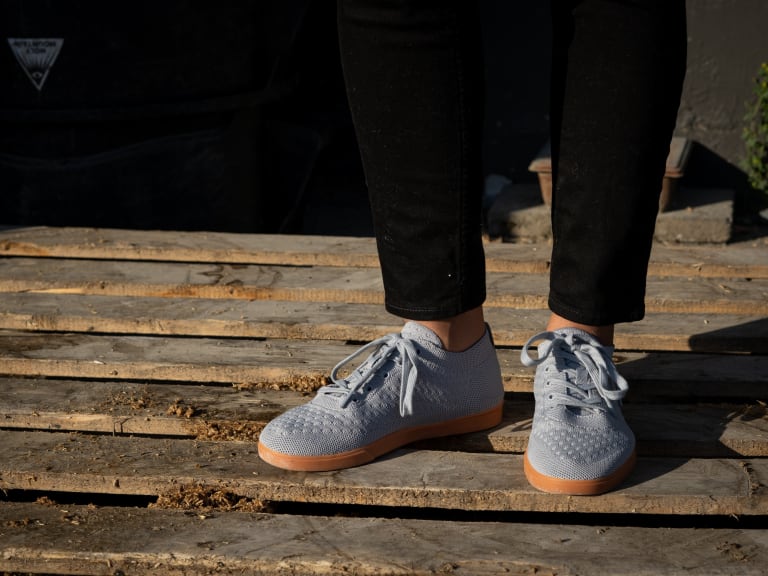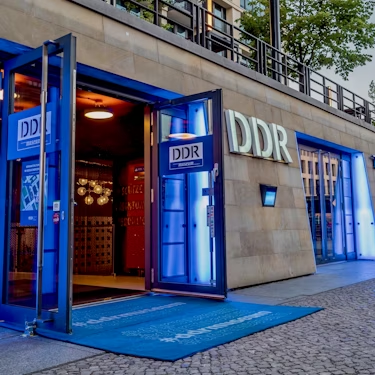More about: Day Trips to Sachsenhausen Concentration Camp from Berlin
During World War II, the Nazis built many internment centres all over Europe, but of all of them, the one that was considered the ideal prototype to embody the ideals of the National Socialist regime was the Sachsenhausen concentration camp.
After the harsh events that took place in the camp during those years, the Sachsenhausen concentration camp was transformed into a memorial in honour of the victims of barbarism, so that these terrible events would never be repeated. I'll tell you how to visit it.

Sachsenhausen Concentration Camp Day Trip from Berlin
Visit Sachsenhausen, a Holocaust Memorial
This tour includes admission to the Sachsenhausen Memorial and Museum and a local guide who will tell you in detail about the history of this terrible place.
On this tour of the Sachsenhausen concentration camp, which starts in Berlin, you and your guide will travel to the Sachsenhausen concentration camp by public transport. Your guide will tell you about the Nazi concentration camp system and give you all the details about the history of this terrible and dark place.
Once in Sachsenhausen, you will visit the appellplatz, the barracks, the pathology department, the Zeilenbau (Gestapo prison), the extermination centre and the crematorium, during a tour in which the guide will tell you stories about the daily life of the prisoners, the tortures and punishments. You will also learn about the last days of the concentration camp and its use by the Soviets after World War II.
Recommended if... you want to visit Sachsenhausen but don't have much time to plan your own visit.
How are the guided tours of the Sachsenhausen Concentration Camp?

The Sachsenhausen concentration camp is considered one of the must-visits for visitors to Berlin. To see it, this is the most complete and popular option.
What this tour consists of
This is a 6-hour excursion to Sachsenhausen to learn, together with a Spanish-speaking guide (accredited by the memorial itself), about the history of this place, the type of prisoners it housed and their harsh living conditions. It held around 60,000 prisoners, of whom more than 12,000 did not manage to escape alive.
In addition, this walking tour will show you the most important sites of the camp, such as Barracks 38, the punishment cells, the central courtyard and the infirmary where human experiments were carried out on the inmates.
During the tour you will also hear various testimonies from survivors, see some pictures of the camp taken by the SS, as well as secret documentation found at the end of the war.
Why take this guided tour?
I would definitely recommend taking this tour to Sachsenhausen with a guide rather than on your own, mainly because you won't have to worry about how to get your tickets there and because you will have the narration of a professional guide who will answer your questions and give historical context to what you see in the camp, which is quite convenient in a place like this.
The history of the Sachsenhausen Concentration Camp

Nazi Germany designed this place as the ideal prototype for the ideals of the National Socialist regime and it came to house the central administration office for the other concentration camps. It began as a detention centre and labour camp for political prisoners, but the Nazis soon also interned people they considered inferior because of their race, religion or other characteristics.
During the time that Sachsenhausen was in operation (1933-1945), thousands of people were subjected to forced labour, torture, starvation, human experimentation and finally extermination.
After the liberation of the concentration camp by the USSR, Sachsenhausen became a special camp of the Soviet secret service and another detention centre for GDR prisoners. Since 1993 it has been a memorial to the victims of that time.
What you will see at Sachsenhausen concentration camp

Because Sachsenhausen was almost completely dismantled in the 1950s, most of the concentration camp is empty and little of the original infrastructure remains. However, many parts were reconstructed according to the models used by the Nazis and with the same materials for authenticity and accuracy.
- Tower A: the watchtower through which the concentration camp was accessed.
- Barracks 38 and 39: these were the buildings in which the Jewish prisoners were held. The reconstructions of the bunks and toilets that were made later according to the testimony of survivors can be seen. Today it is the Museum of the Resistance.
- Punishment cells: this was the prison of the camp. This is where the most important prisoners were locked up and where the Gestapo inflicted brutal punishments.
- Kitchen and laundry: two barracks with permanent exhibitions about Sachsenhausen.
- Firing pit, gas chambers and mass grave: places where the Nazis murdered the prisoners and later buried them.
- Infirmary and morgue: this was the site where human experiments were performed on the inmates and where some of the corpses were stored.
- Tower E: this tower displays an exhibition on the relationship between Oranienburg and Sachsenhausen.
- Central courtyard: This was the space where the Nazis forced prisoners to train for long hours in the rain, cold and heat, or where they carried out public executions by hanging.
- Memorials: In the camp there are several memorials dedicated to the victims, such as the Soviet memorial, the one in the central courtyard, the plaques dedicated to the Spanish prisoners or the memorial next to the disappeared gas chamber to all those murdered in Sachsenhausen.
Why the Sachsenhausen concentration camp is worth a visit

Given its proximity to Berlin, a trip to Sachsenhausen will allow you to delve into a tragic episode in European history, to empathise with the suffering of many people and to reflect on what happened here so that it will never happen again. Moreover, if you like history, you will see in person **one of the most important places in the development of World War II.
However, to do it you must take into account that it is a very hard visit. Before joining this tour you should prepare yourself for what you will see and hear here. There will be times when you will get a lump in your throat and goose bumps as you walk through this place and imagine the aberrations that were committed here.
So be warned that the Sachsenhausen concentration camp tour may not be suitable if you are a very sensitive person. In fact, it is not recommended for children under the age of 12 because of the crudeness of the exhibits.
Plan your visit to the Sachsenhausen Concentration Camp

Where is it located?
Straße der Nationen 22, 16515, Oranienburg,
How to get there
These tours do not include travel to Sachsenhausen, because of the camp's proximity to Berlin, so you are perfectly free to go on your own. These are the means of transport you can take:
- By train from Berlin: Take the S1 line (S-bahn Wannsee direction Oranienburg) from Berlin Friedrichstraße station and get off at Oranienburg station, which is the last stop. To travel you will need a ticket valid for ABC zones. Trains run every 20 minutes and the journey time is about 45 minutes.
- **To Sachsenhausen from Oranienburg train station: You can walk 20 minutes to the concentration camp (don't worry, the way is well signposted) or take buses 804 (direction Malz) and 821 (direction Tiergarten) to the memorial outside the station.
- By car from Berlin: Take the A111 motorway to Hamburg. When you arrive in Oranienburger Kreuz take the A10 towards Prenzlau and exit at Birkenwalder. Then take the B96 towards Oranienburg and follow the signs for "Gedenkstätte" to Sachsenhausen. The journey takes about 50 minutes.
Opening times
Open daily:
- 15 March to 14 October: 8.30am to 6am.
- From 15 October to 14 March: 8.30am to 4.30am.
The museums are closed on Mondays.
What should I take with me to Sachsenhausen concentration camp?

- This place is big and you will have to walk a bit between the different points of interest, so I advise you to wear comfortable shoes. As for clothing, as this is a visit to a memorial, I recommend you wear formal clothes out of respect.
- You can take photos at the concentration camp, so it's no problem to bring your camera, but remember that Sachsenhausen is a memorial to the victims of Nazism, so try to be considerate when taking photos.
- On the way back to Berlin, I recommend bringing a bottle of water and a snack in case you work up an appetite.
Other excursions you might like

If during your trip to Berlin you would like to do more excursions than this one, have a look at the best tours and excursions from Berlin where you will find more ideas to make the most of your trip. Among others, you can take a trip to Potsdam from Berlin. And if you want to delve deeper into history, you can take a tourof Berlin's Jewish Quarter.














